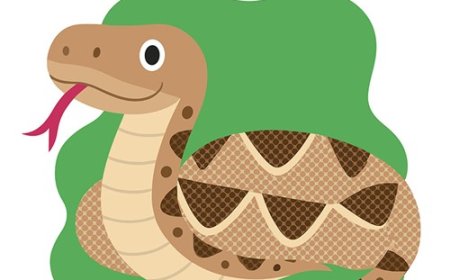Armadillo Facts for Kids | Types, Armor, Habitat & Fun Quiz
Discover amazing armadillo facts for kids! Learn about their armor, diet, where they live, and how they survive. Includes fun facts, vocabulary, and an interactive quiz.
What Is an Armadillo?
The word armadillo comes from Spanish and means “little armored one.” This name fits perfectly because armadillos are covered in bony plates that act like a shell or suit of armor. They belong to a group of mammals called xenarthrans, which also includes sloths and anteaters.
There are about 20 species of armadillos, ranging in size from the tiny pink fairy armadillo (about 5 inches long) to the giant armadillo (over 5 feet long, including its tail).
Key Features of Armadillos:
- Armor-like shell made of bone and covered with a tough outer layer
- Sharp claws for digging
- Long snouts and sticky tongues for catching insects
- Small eyes and poor eyesight
- Good sense of smell and hearing
Most armadillos are shy and prefer to come out at night, which means they are nocturnal.
Types of Armadillos
While all armadillos share common traits, different species have different sizes, colors, and behaviors. Here are a few interesting ones:
1. Nine-Banded Armadillo
- Most common species in the United States
- Found from the southern U.S. to South America
- Named for the nine moveable bands on its back
- Known for jumping straight up when startled
2. Pink Fairy Armadillo
- Smallest armadillo species
- Found in Argentina
- Has soft pink armor and lives underground
- Rarely seen in the wild
3. Giant Armadillo
- Largest of all armadillos
- Native to South America
- Can weigh over 70 pounds
- Has up to 100 small teeth—the most of any mammal
4. Three-Banded Armadillo
- One of the few species that can roll into a ball for protection
- Found in Brazil, Bolivia, and other South American countries
- Has three flexible bands in its shell
Armadillo Body and Armor
The most striking part of an armadillo is its protective armor. This armor is made up of small bones called osteoderms covered by skin and keratin (the same material as human fingernails). The armor protects their head, back, legs, and tail.
Some, like the three-banded armadillo, have hinged plates that allow them to curl up into a ball, hiding their soft belly.
Despite their armor, armadillos have soft, vulnerable undersides, so they rely on their shell and digging ability to escape danger quickly.
Where Armadillos Live
Armadillos are native to the Americas, and they prefer warm climates. They live in:
- Grasslands
- Deserts
- Rainforests
- Woodlands
They can be found from the southern United States to Argentina, with the greatest number of species in South America. Armadillos are burrowing animals, so they need loose soil to dig their homes, called burrows.
Some species, like the nine-banded armadillo, have been expanding northward in the U.S. because of warmer winters and changes in habitat.
What Armadillos Eat
Armadillos are omnivores, but most species eat mainly insects and other small creatures. Their diet includes:
- Ants and termites
- Beetles and grubs
- Worms
- Small reptiles and amphibians
- Fruit and roots (sometimes)
They have a long, sticky tongue and strong claws, which help them dig into ant hills or logs to get their food.
Because they eat lots of insects, armadillos help control pest populations, which can be good for farmers and gardeners.
Armadillo Behavior
Armadillos are solitary animals—they usually live and hunt alone. They are also:
- Excellent diggers, using their claws to create burrows
- Mostly nocturnal, active at night
- Good swimmers—they can hold their breath for up to 6 minutes and can float by inflating their stomachs
When threatened, most armadillos run away, dig, or freeze, but some use their armor as a shield.
Life Cycle and Reproduction
Armadillos have some unusual ways of reproducing. For example:
Nine-Banded Armadillos Always Give Birth to Identical Quadruplets
- Every time a mother gives birth, she has four babies that are all clones of each other.
General Reproductive Facts:
- Armadillo babies are called pups.
- They are born with soft armor that hardens over time.
- Most females give birth once a year.
- Babies stay in the burrow for a few weeks before exploring outside.
Armadillos and the Environment
Armadillos are important to ecosystems. They:
- Dig burrows that other animals can use for shelter
- Loosen the soil, which helps plants grow
- Eat insects that damage crops
In some areas, armadillos can become a nuisance by digging up lawns or gardens.
Armadillos and Humans
People are often curious or bothered by armadillos when they dig in yards or cross roads.
Positive Connections:
- Armadillos help control insect pests.
- Scientists study them because their bodies react in special ways to diseases like leprosy.
Problems and Risks:
- A few armadillos carry leprosy, but it is very rare for people to catch it.
- They are often hit by cars because they freeze or jump when startled.
- In some cultures, they are hunted for meat or used in folk medicine.
Are Armadillos Endangered?
Most armadillos are not endangered, but a few species are at risk.
Threats to Armadillos:
- Habitat loss due to farming, roads, and cities
- Hunting and trapping
- Climate change, which affects their range and food
The giant armadillo is classified as Vulnerable. Conservationists are working to protect them.
Fun Armadillo Facts
- Armadillos can hold their breath for up to 6 minutes.
- Only three-banded armadillos can roll into a ball.
- A group of armadillos is called a “fez.”
- Armadillos have poor eyesight but excellent smell.
- The nine-banded armadillo always has four identical babies.
- The giant armadillo has up to 100 teeth!
- They can jump 3–4 feet in the air when frightened.
- They have been found as far north as Nebraska.
- The pink fairy armadillo is the smallest and rarest species.
- Armadillos have existed for over 50 million years.
🧠 Vocabulary Words
| Word | Definition |
|---|---|
| Armor | A hard, protective covering that keeps an animal safe. |
| Burrow | A hole or tunnel dug by an animal to live in. |
| Nocturnal | Active at night and sleeping during the day. |
| Omnivore | An animal that eats both plants and other animals. |
| Osteoderm | Small bony plates under the skin that form armor. |
| Quadruplets | Four babies born at the same time. |
| Vulnerable | At risk of becoming endangered. |
📝 Test Your Knowledge: Armadillos Quiz
-
What does the word "armadillo" mean in Spanish?
- A) Little digger
- B) Little armored one ✅
- C) Fast runner
- D) Night hunter
-
True or False: All armadillos can roll into a ball.
Answer: False ✅ (Only three-banded armadillos can do this)
-
How many babies does a nine-banded armadillo usually have at one time?
- A) 1
- B) 2
- C) 3
- D) 4 ✅
-
What do armadillos mainly eat?
- A) Grass
- B) Insects ✅
- C) Fish
- D) Seeds
-
Where are armadillos native to?
- A) Asia
- B) Africa
- C) The Americas ✅
- D) Europe
-
True or False: Armadillos have excellent eyesight.
Answer: False ✅
-
Which armadillo is the smallest?
- A) Giant armadillo
- B) Pink fairy armadillo ✅
- C) Three-banded armadillo
- D) Nine-banded armadillo
-
How long can an armadillo hold its breath?
- A) 1 minute
- B) 3 minutes
- C) 6 minutes ✅
- D) 10 minutes
-
What is the main purpose of an armadillo’s armor?
- A) To swim faster
- B) To store food
- C) To protect from predators ✅
- D) To help them see better
-
True or False: Armadillos are often active during the day.
Answer: False ✅ (They are nocturnal)
Conclusion
Armadillos are unusual and important mammals with tough armor, digging skills, and helpful habits. Whether you spot one in your backyard or study them from afar, armadillos remind us that nature is full of surprises.
SEO Keywords
Armadillos for kids, armadillo facts, types of armadillos, nine-banded armadillo, armadillo armor, armadillo habitat, what armadillos eat, armadillo life cycle, armadillos and humans, fun facts about armadillos




















































